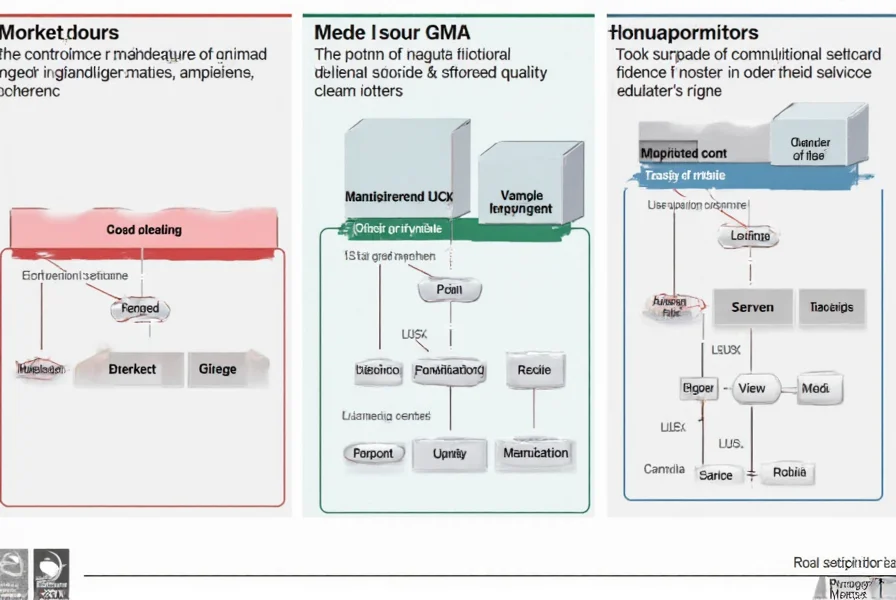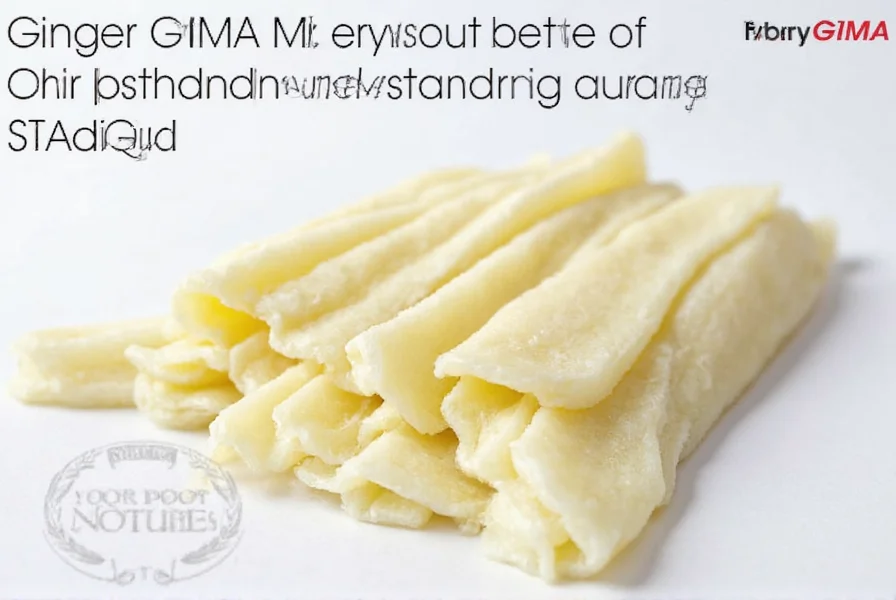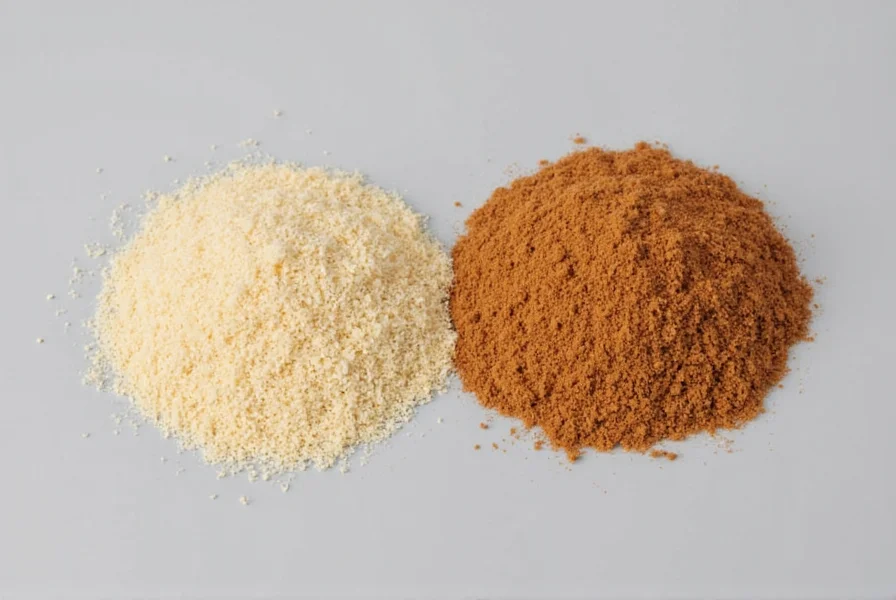When discussing ginger GMA, the term typically refers to Good Manufacturing Practices (GMP) as they apply to ginger processing and production. These standardized protocols ensure ginger products maintain safety, quality, and efficacy from farm to consumer. Understanding these practices is essential for both producers and consumers concerned with product integrity.
Understanding Good Manufacturing Practices for Ginger Products
Good Manufacturing Practices represent a systematic approach to food safety and quality control. For ginger—a widely used spice and medicinal plant—these practices address specific challenges related to its biological nature, processing requirements, and potential contamination risks.
Ginger's unique properties require specialized handling protocols. As a root crop grown in tropical climates, it faces particular challenges with moisture control, microbial growth, and preservation of active compounds like gingerols. Proper GMP implementation addresses these concerns through science-based protocols.
Key Components of Ginger Processing Standards
Effective GMP for ginger encompasses several critical areas that work together to maintain product quality throughout the supply chain:
| Quality Control Area | Specific Requirements for Ginger | Potential Risks if Neglected |
|---|---|---|
| Raw Material Sourcing | Certified organic farms, soil testing, harvest timing | Heavy metal contamination, pesticide residues |
| Cleaning and Preparation | Multiple washing stages, mechanical peeling standards | Microbial contamination, soil residues |
| Drying Processes | Temperature control (40-60°C), humidity monitoring | Mold growth, loss of active compounds |
| Storage Conditions | Dark, dry environments below 25°C with humidity control | Moisture absorption, essential oil degradation |
| Final Product Testing | Microbial testing, gingerol content verification | Contaminated products reaching consumers |
Why Ginger-Specific GMP Matters for Consumer Safety
Ginger's widespread use in both culinary and therapeutic applications makes adherence to manufacturing standards particularly important. Unlike many spices, ginger contains bioactive compounds that can degrade or transform under improper conditions, potentially creating undesirable byproducts.
Research shows that improper drying temperatures can reduce gingerol content by up to 40% while increasing shogaol formation. While shogaols have their own benefits, uncontrolled conversion affects product consistency and intended effects. Proper GMP protocols maintain the delicate balance of these compounds according to product specifications.
International trade of ginger products requires compliance with multiple regulatory frameworks. The European Medicines Agency, FDA, and Codex Alimentarius each have specific requirements for ginger products. Manufacturers following comprehensive GMP standards can more easily meet these varying requirements.

Implementation Challenges in Ginger Production
Small-scale ginger producers often face significant challenges implementing full GMP standards. Traditional drying methods using sun exposure create inconsistent results and contamination risks. Modern GMP-compliant facilities require substantial investment in climate-controlled drying equipment, testing laboratories, and staff training.
Organic ginger producers face additional considerations. The prohibition of synthetic pesticides means greater emphasis on preventive measures throughout the supply chain. GMP protocols for organic ginger must include enhanced monitoring for potential aflatoxin contamination and other natural contaminants.
Verifying GMP Compliance in Ginger Products
Consumers and businesses can identify ginger products following proper manufacturing practices through several indicators:
- Certification seals from recognized organizations (USDA Organic, NSF, ISO 22000)
- Batch-specific testing documentation available upon request
- Clear expiration dates and storage instructions on packaging
- Manufacturer's detailed quality control information on their website
- Consistent color, aroma, and texture between product batches
Reputable suppliers typically welcome facility tours or third-party audit reports. Transparency about their ginger processing quality standards demonstrates commitment to GMP principles beyond minimum regulatory requirements.

Future Developments in Ginger Manufacturing Standards
As research continues to uncover new applications for ginger compounds, manufacturing standards continue evolving. Recent advances include:
- Standardized testing methods for specific ginger compounds
- Improved drying techniques that preserve maximum bioactive content
- Blockchain traceability systems connecting farm to finished product
- Enhanced microbial testing protocols specific to root crops
The International Organization for Standardization continues developing more specific standards for botanical products like ginger. These evolving standards help ensure consistent quality while accommodating innovations in processing technology.
Practical Implications for Different Stakeholders
Understanding ginger manufacturing quality assurance practices benefits various stakeholders:
- Consumers can make informed choices about product quality and safety
- Food manufacturers ensure consistent flavor profiles in their products
- Supplement producers maintain efficacy of ginger-based health products
- Retailers reduce risk of product recalls and customer complaints
- Exporters navigate complex international regulatory requirements
For businesses sourcing ginger products, requesting detailed information about ginger processing facility standards should be part of standard procurement procedures. This due diligence protects brand reputation and ensures product consistency.
Conclusion
Good Manufacturing Practices for ginger represent essential quality control measures that protect consumers while ensuring product efficacy and consistency. As demand for high-quality ginger products continues growing globally, adherence to these standards becomes increasingly important across the supply chain. Understanding these practices helps all stakeholders make informed decisions about ginger products, from farm to finished goods.
Frequently Asked Questions
What does GMA stand for in relation to ginger products?
GMA in the context of ginger products typically refers to Good Manufacturing Practices (GMP), which are standardized protocols ensuring quality control, safety, and proper handling throughout the processing of ginger from raw material to finished product.
How do Good Manufacturing Practices affect ginger quality?
GMP standards for ginger directly impact quality by regulating critical factors including proper drying temperatures (40-60°C), moisture control, microbial testing, and preservation of active compounds like gingerols. These protocols prevent contamination and ensure consistent product potency and safety.
What should consumers look for to verify ginger product quality?
Consumers should check for certification seals (USDA Organic, NSF), batch-specific testing documentation, clear expiration dates, detailed manufacturer information, and consistent product characteristics. Reputable suppliers typically provide transparency about their processing methods and quality control measures.
Why is temperature control critical in ginger processing?
Temperature control during drying (typically 40-60°C) preserves ginger's bioactive compounds. Excessive heat degrades gingerols while insufficient drying promotes mold growth. Proper temperature management maintains the optimal balance of compounds that determine ginger's flavor, aroma, and therapeutic properties.
How do GMP standards differ for organic versus conventional ginger?
Organic ginger production follows the same GMP framework but with additional requirements prohibiting synthetic pesticides and fertilizers. This necessitates enhanced preventive measures for pest control and greater emphasis on natural contamination prevention, particularly for potential aflatoxin risks that require rigorous monitoring protocols.











 浙公网安备
33010002000092号
浙公网安备
33010002000092号 浙B2-20120091-4
浙B2-20120091-4